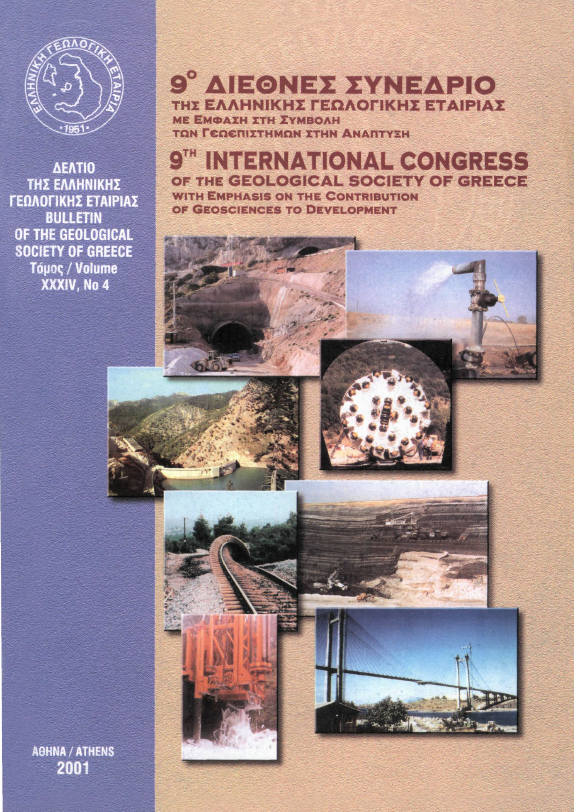Γεωλογική και τεκτονική δομή της περιοχής μεταξύ των ορέων Αιγάλεω και Πάρνηθας (Αττική, Ελλάδα) και η σημασία τους στον αντισεισμικό σχεδιασμό

Περίληψη
Η περιοχή μεταξύ των ορέων Αιγάλεω και Πάρνηθας αποτελεί ένα σύνθετο τεκτονικό βύθισμα, πληρωμένο με διάφορες φάσεις μεταλπικών ιζημάτων, που χαρακτηρίζεται από μια σύνθετη τεκτονική δομή και εξέλιξη από το Μειόκαινο μέχρι σήμερα. Στο εσωτερικό του βυθίσματος αναπτύσσονται μια σειρά από δεύτερης τάξης ρήγματα και ρηξιγενείς ζώνες, που έχουν δραστηριοποιηθεί σε διαφορετικές περιόδους κατά τη νεοτεκτονική περίοδο και τεμαχίζουν την περιοχή σε επιμέρους τάφρους και κέρατα. Οι διευθύνσεις των ρηγμάτων αυτών είναι κυρίως Α-Δ και ΒΒΔ-ΝΝΑ, αντίστοιχες δηλαδή με τις διευθύνσεις των μεγάλων περιθωριακών ρηγμάτων των μεγάλων τεκτονικών κεράτων της Πάρνηθας και του Αιγάλεω. Τόσο η σύνθετη τεκτονική δομή, όσο οι λιθολογικές φάσεις φαίνεται ότι διεδραμάτισαν σημαντικό ρόλο στην κατανομή των καταστροφών των σεισμών της 7ης Σεπτεμβρίου 1999.
Λεπτομέρειες άρθρου
- Πώς να δημιουργήσετε Αναφορές
-
ΛΕΚΚΑΣ Ε. Λ., ΛΟΖΙΟΣ Σ. Γ., & ΔΑΝΑΜΟΣ Γ. Δ. (2001). Γεωλογική και τεκτονική δομή της περιοχής μεταξύ των ορέων Αιγάλεω και Πάρνηθας (Αττική, Ελλάδα) και η σημασία τους στον αντισεισμικό σχεδιασμό. Δελτίο της Ελληνικής Γεωλογικής Εταιρείας, 34(1), 19–27. https://doi.org/10.12681/bgsg.16939
- Ενότητα
- Γενική και Τεκτονική Γεωλογία

Αυτή η εργασία είναι αδειοδοτημένη υπό το CC Αναφορά Δημιουργού – Μη Εμπορική Χρήση 4.0.
Οι συγγραφείς θα πρέπει να είναι σύμφωνοι με τα παρακάτω: Οι συγγραφείς των άρθρων που δημοσιεύονται στο περιοδικό διατηρούν τα δικαιώματα πνευματικής ιδιοκτησίας επί των άρθρων τους, δίνοντας στο περιοδικό το δικαίωμα της πρώτης δημοσίευσης. Άρθρα που δημοσιεύονται στο περιοδικό διατίθενται με άδεια Creative Commons 4.0 Non Commercial και σύμφωνα με την οποία μπορούν να χρησιμοποιούνται ελεύθερα, με αναφορά στο/στη συγγραφέα και στην πρώτη δημοσίευση για μη κερδοσκοπικούς σκοπούς. Οι συγγραφείς μπορούν να: Μοιραστούν — αντιγράψουν και αναδιανέμουν το υλικό με κάθε μέσο και τρόπο, Προσαρμόσουν — αναμείξουν, τροποποιήσουν και δημιουργήσουν πάνω στο υλικό.




